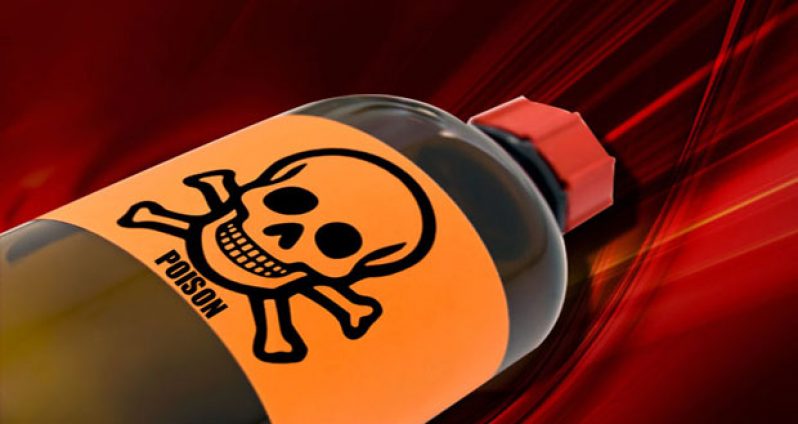WITH a high death rate from suicide among East Indians in Guyana, Suriname and Trinidad and Tobago, it appears to be a culture among East Indians to escape their woes.
Some 80 percent of persons who commit suicide in Guyana are East Indians. And even with a national death rate of 44.2 deaths per 100,000, the highest in the world, it is estimated that unreported suicide in Guyana is 10 percent greater than the reported number of persons who commit the harrowing act.
According to Dr. Indhira Harry, in a joint presentation with Dr. Jorge Balseiro, from 2010-2012 some 667 persons killed themselves.
Speaking at the Caribbean Public Health Agency’s (CARPHA) 60th Health Research Conference at the St George’s University Campus, Grenada, Dr. Singh also noted that unreported suicide attempts is believed to be about 20 percent more than reported attempts.
In sister Caricom nation, Trinidad and Tobago, about 1,000 persons attempt suicide every year. The majority of persons who committed or attempted to commit suicide there are poor and single, and the act is due mainly to spousal conflict.
ABOVE GLOBAL AVERAGE
Locally, at 44.2 deaths per 100,000, Guyana is way above the global average of 11.4 per 100,000 and the average rate in Latin America and the Caribbean, which stands at 6.1 per cent per 100,000.
Pan American Health Organisation (PAHO) Country Representative, Dr. Williams Adu-Krow told delegates at the conference that though Guyana has the highest deaths by suicide; it has also undertaken the highest number of interventions to tackle the scourge.
But while data from the World Health Organisation (WHO) supports the current and widely reported suicide rate, the Ministry of Health says Guyana is not doing that bad, reporting a lower rate at 34.7 per 100,000.
MODT SUSCEPTIBLE
Reporting on a study conducted here titled: “Profile of suicidal behaviour in Guyana: A retrospective study from 2010-2012,” Dr. Harry said from a sample of 899 cases (555 actual suicides and 344 attempts), suicide attempts were made mostly by persons between ages of 10 to 29, but troubled persons ages 12 to 18 are most susceptible.
80 PERCENT EAST INDIANS
Those who actually commit the act are between ages 20 to 49, 80 percent of whom are East Indians, with more men than women taking their lives.
However, in Trinidad and Tobago, which also has a large East Indian population and a high number of persons committing suicide, more females in that country take their lives than males.
Quite incidentally, neighbouring Suriname, which also has a high East Indian population, has the second highest suicide rate in the world, behind Guyana.
RISK FACTORS
In Guyana, Dr. Harry identified culture and to a lesser extent religion as common risk factors of suicide. Other prominent risk factors include acute emotional distress, mental disorder, impulsivity, aggressive tendencies and adolescent maladaptive disorder, and alcohol abuse.
ACCESS TO POISONOUS SUBSTANCES
Like Suriname and Trinidad and Tobago, in Guyana there is easy access to pesticides and herbicides. These substances are used by the majority of persons who committed or attempted suicide.
The number of Africans attempting to commit suicide is less than half the number compared to East Indians.
Some 60.8 percent of persons in Guyana who attempted suicide are single, 68 percent have no descendants, 52.3 percent had family problems, while 30 percent each are Hindus and Pentecostals.
From 2010-2012 some 359 persons here committed suicide by drinking poison, of which 191 were men. Notably too, some 136 hanged themselves, and of this number 115 were men.
During that period, persons also committed suicide by other means, including shooting themselves, drowning and medication overdose.
DEPRESSION AND ANGER
Dr. Harry reported that depression and anger are the most common causes of suicide in Guyana, put pointed out that family discord, issues with couples and domestic violence are also factors that lead to suicide.
She noted that aside from poisonous substances being easily accessible, which is the chief means utilised by persons to take their lives, the media also need to be responsible in their reporting.
Dr. Harry explained that the majority of persons who committed suicide did so by following the patterns of the persons they read about or had seen committing the act.
Dr. Jorge Balseiro told the conference that the suicide profile in Guyana has been well identified with a scientific evidence base. He said it is an important step in an effort to characterise who and why people die from suicide in the country, and opens future avenues for research that could be completed with a detailed psychological autopsy and toxicology investigation.
To counter the prevalence of suicide, Guyana has developed a National Suicide Prevention Strategy, has been improving access to mental health, restricting access to poisonous substances, and raising awareness about suicide prevention.
By Tajeram Mohabir




.jpg)









